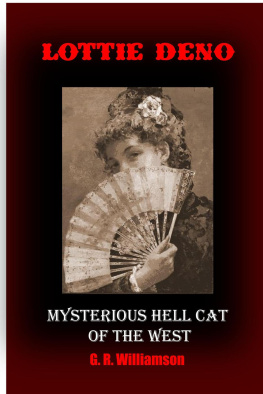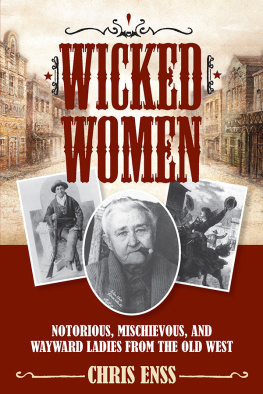John Marvin Hunter
(March 18, 1880 June 29, 1957)
He was an author, a printer, and a reporter but, most of all an intrepid historian. As the Old West was winding down, he actually talked with the last remaining vestiges of the wild and wooly characters that were later written about by other historians that relied upon second or third hand accounts. He got it straight from the horses mouth.
In addition, he was able to become a close acquaintance of Lottie Deno in her senior years as a respectable woman in Deming New Mexico. She revealed much of her life as a gambler.
| Lottie Deno, The Early Years |
| San Antonio, Texas |
| Fort Concho, Texas |
| Fort Griffin, Texas |
| Gambling in New Mexico |
| Obituaries |
| J. Marvin Hunter Meets Lottie Deno |
| Infamous Photographs |
| References |
| Authors Notes |
W hile most women working in saloons were entertainers, dancing partners, percentage girls, or outright prostitutes, a select few were bartenders or saloon owners. An even smaller number were gamblers working as dealers at faro, monte, or twenty-one tables
Granted, most of these enterprising women had to occasionally resort to the other forms of female vice to recover from an extended run of bad luck. Nevertheless, these women were masters at their craft and at reading male psychology.
Often dressing in low-cut gowns and using suggestive double entendre, their tables usually drew a crowd. In some ways men seem to enjoy losing to a beautiful maven, especially if she managed to flatter them in the process.
Like their male counterparts, the women dealers had bad runs of luck - most frequently with their bed partners. Only a very few lived to be wealthy retired gamblers and members of respectable social circles.
The term, Hellcats was a common term used in the Old West, stemming from the use of gambling hells, that was used to describe what we know as gambling halls. With the notoriety of the female dealers, it was only natural for the newspapers of the day to refer to them as hellcats remember salacious sells .

I n 1957, J. Marvin Hunter, wrote a book on Lottie Deno, entitled, The Story of Lottie Deno: Her Life and Times; The Story of The Mysterious Aristocrat Who Became A Lady Gambler and Female Dared (full title, exactly how it was written.) He died before the book was published by his sons in 1959.
In reading the book, he describes visiting with the elderly Lottie Deno in Deming, New Mexico, where he lived as a young newspaper man. The woman was known in the community as Charlotte Thurmond. She was a well-thought of matronly woman who had a benevolent reputation, especially towards children. No one in Deming knew about her past, and that, in reality, she was the notorious hellcatLottie Deno.
Hunter traveled throughout the Southwest, working at several newspapers, one of which was in Deming, New Mexico. In the Introduction to his book, it states:
He personally knew and enjoyed the friendship of the elderly Mrs. Charlotte Thurmond at the turn of the century when he was a young newspaperman in Deming New Mexico, he lived near the Thurmond home. It was there that he came to believe that Charlotte Thurmond was none other than the famed Lottie Deno, the angel of the gambling dens throughout Texas and New Mexico, and since so many facts pointed up the truth of his belief he resolved that one day he would write her biography and support it with all the evidence that tireless research could possibly bring to life.

J OHN MARVIN HUNTER (March 18, 1880 June 29, 1957) He was an author, a printer, and a reporter but, most of all an intrepid historian. As the Old West was winding down, he actually talked with the last remaining vestiges of the wild and wooly characters that were later written about by other historians that relied upon second or third hand accounts. He got it straight from the horses mouth.
In 1925, Hunter posthumously published the autobiography of outlaw John Wesley Hardin, one of the deadliest gunfighters of the Old West. When he was sentenced to 25 years in prison for murder in 1877, Hardin claimed to have killed 42 men. While he sat in his prison cell, he wrote his autobiography and studied law.
After serving seventeen years, Hardin was released from prison on February 17, 1894. He was forty years old at the time of his release and he moved to Gonzales, Texas. Then, on March 16, Hardin was pardoned. He passed the state's bar examination and obtained his license to practice law. Go figure .
In 1900, a newspaper article reported that, Hardin made a $5 bet that he could "at the first shot" knock a Mexican man off the soap box on which he was "sunning" himself. Winning the bet, he made the claim that the man died from the fall and not the gunshot. Using his legal training, he avoided jail time.
Next page
















